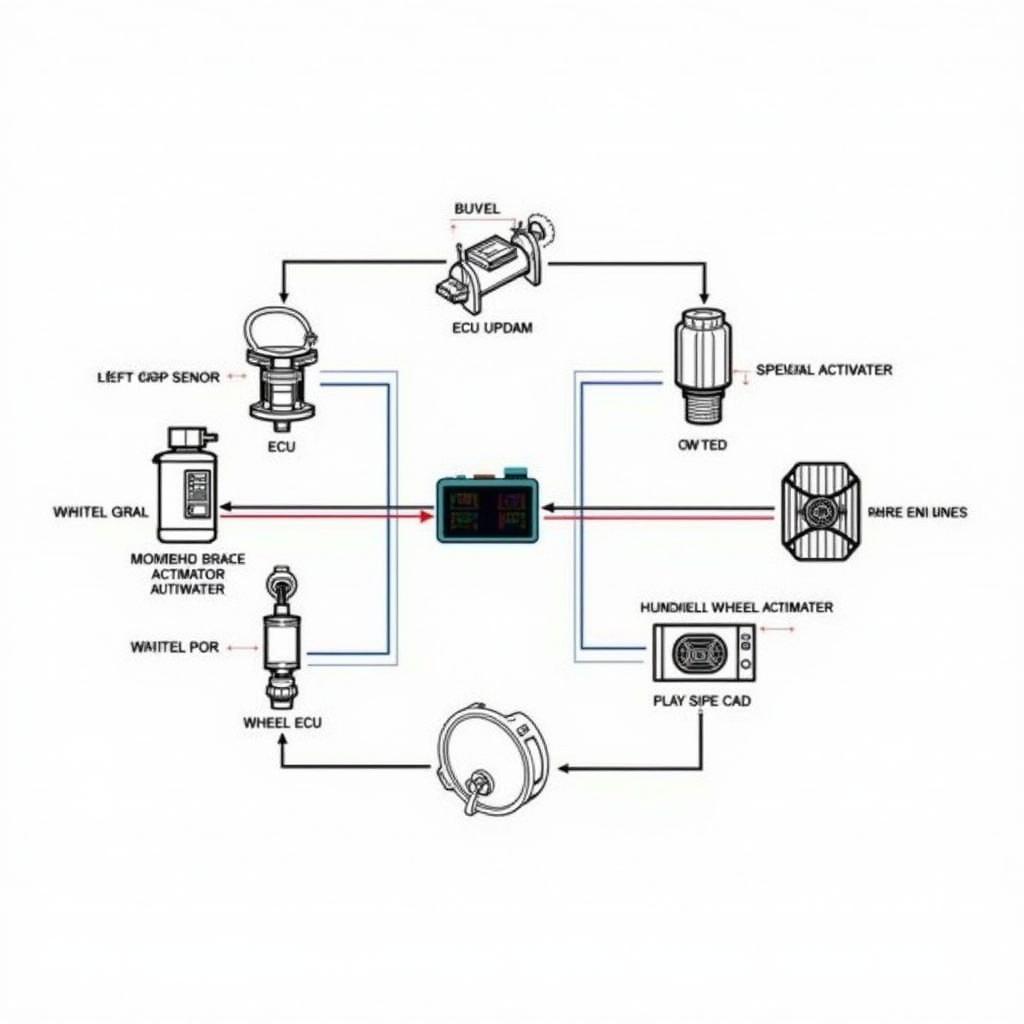VCDS (Vehicle Diagnostic and Control System) is a powerful tool that allows you to access and modify various settings in your car. One popular application is using VCDS to code LED headlights, providing you with personalized control over their functionality. This guide will walk you through the process of VCDS LED headlight coding, ensuring you understand the basics and potential advantages it offers.
What is VCDS LED Headlight Coding?
VCDS LED headlight coding involves using a VCDS interface to access and modify the electronic control units (ECUs) that manage your vehicle’s lighting systems. This allows you to customize various aspects of your LED headlights, including:
- Turning on/off specific LED functions: This could involve enabling or disabling features like DRL (Daytime Running Lights), cornering lights, and adaptive headlights.
- Adjusting LED brightness: You can adjust the brightness of different LED elements within the headlight assembly to your desired level.
- Modifying LED behavior: You can change the way LEDs react to specific situations, such as adjusting the intensity of the high beams when encountering oncoming traffic.
Why Code Your LED Headlights?
Coding your LED headlights can offer numerous advantages:
- Enhanced functionality: Access features not available from the factory, like adaptive headlights or advanced DRL patterns.
- Customization: Tailor the headlights to your personal preference, adjusting brightness, color, and function to your liking.
- Increased safety: By enabling certain features like adaptive headlights, you can improve your visibility at night, enhancing safety on the road.
- Aesthetic appeal: Modify the headlight behavior to create unique visual effects, enhancing the overall look and feel of your vehicle.
How to Code LED Headlights with VCDS
Coding your LED headlights with VCDS is a straightforward process. You will need a VCDS interface, a laptop, and the correct coding instructions for your vehicle model. The process generally involves the following steps:
- Connect VCDS to your vehicle: Ensure your VCDS interface is connected to your vehicle’s diagnostic port.
- Select the correct control module: In VCDS, navigate to the “Central Electronics” or “Lighting” control module, depending on your vehicle’s system.
- Locate the desired coding options: Within the chosen control module, search for the specific coding parameters related to your LED headlights.
- Change the coding values: Adjust the coding values to enable or disable specific features, modify brightness, or alter the LED behavior.
- Save the changes: After making the desired modifications, save the coding changes to the ECU.
Tips for Successful LED Headlight Coding
To ensure a smooth and successful coding process, remember the following tips:
- Consult your vehicle’s manual: Familiarize yourself with the coding options available for your specific vehicle model.
- Research coding instructions: Find detailed instructions and coding tables online for your vehicle year, make, and model.
- Back up your original coding: Before making any changes, back up your existing coding to restore it if necessary.
- Start with small modifications: Begin with minor changes and gradually explore more advanced features as you gain confidence.
- Consult a professional: If you are unsure about any aspect of the coding process, seek assistance from a qualified automotive technician.
Example of VCDS LED Headlight Coding
Let’s consider an example of coding LED headlights on an Audi A6 C6. You can use VCDS to enable the “Dynamic DRL” feature, where the DRLs illuminate in a sequential pattern. To do this, you would need to find the corresponding coding parameter within the “Central Electronics” module and change the value to activate the feature.
The Importance of Professional Guidance
While VCDS provides a user-friendly interface for modifying vehicle settings, it’s crucial to exercise caution and consider the potential consequences of making unintended changes. Incorrect coding can lead to unexpected behavior, damage to your vehicle’s electronics, or even safety hazards.
“It’s essential to approach VCDS coding with a healthy dose of caution,” emphasizes [Name of a hypothetical expert], a seasoned automotive technician. “While it offers exciting customization possibilities, it’s crucial to understand the potential risks involved. Always consult a professional if you have any doubts or encounter unexpected results.”
FAQ
Q: Is VCDS LED headlight coding legal?
A: The legality of coding LED headlights can vary depending on your location. In some regions, modifying factory settings may be prohibited, while in others, it might be permitted as long as it doesn’t affect the safety of your vehicle. Check local regulations before making any changes.
Q: Will coding my LED headlights void my warranty?
A: Modifying your vehicle’s settings with VCDS could potentially void your warranty. It’s best to check with your vehicle manufacturer or authorized dealer to confirm the warranty implications.
Q: Can I code any type of LED headlight?
A: Not all LED headlights can be coded with VCDS. The specific features and coding options available depend on the vehicle model and the LED headlight system installed.
Q: Are there any risks associated with coding my LED headlights?
A: Yes, there are potential risks associated with VCDS coding, including accidental damage to your vehicle’s electronics or unexpected behavior. It’s essential to exercise caution and seek professional assistance if you are unsure about any aspect of the coding process.
Q: What if I make a mistake while coding?
A: If you make a mistake while coding, you can usually revert to your original coding by backing up the settings before making changes. However, if you encounter any problems or difficulties, consult a qualified automotive technician.
Conclusion
VCDS LED headlight coding offers a valuable opportunity to customize your vehicle’s lighting system and enhance its functionality. By understanding the process and exercising caution, you can safely unlock the potential of your LED headlights. Remember to research thoroughly, consult professional guidance when needed, and prioritize safety above all else.

